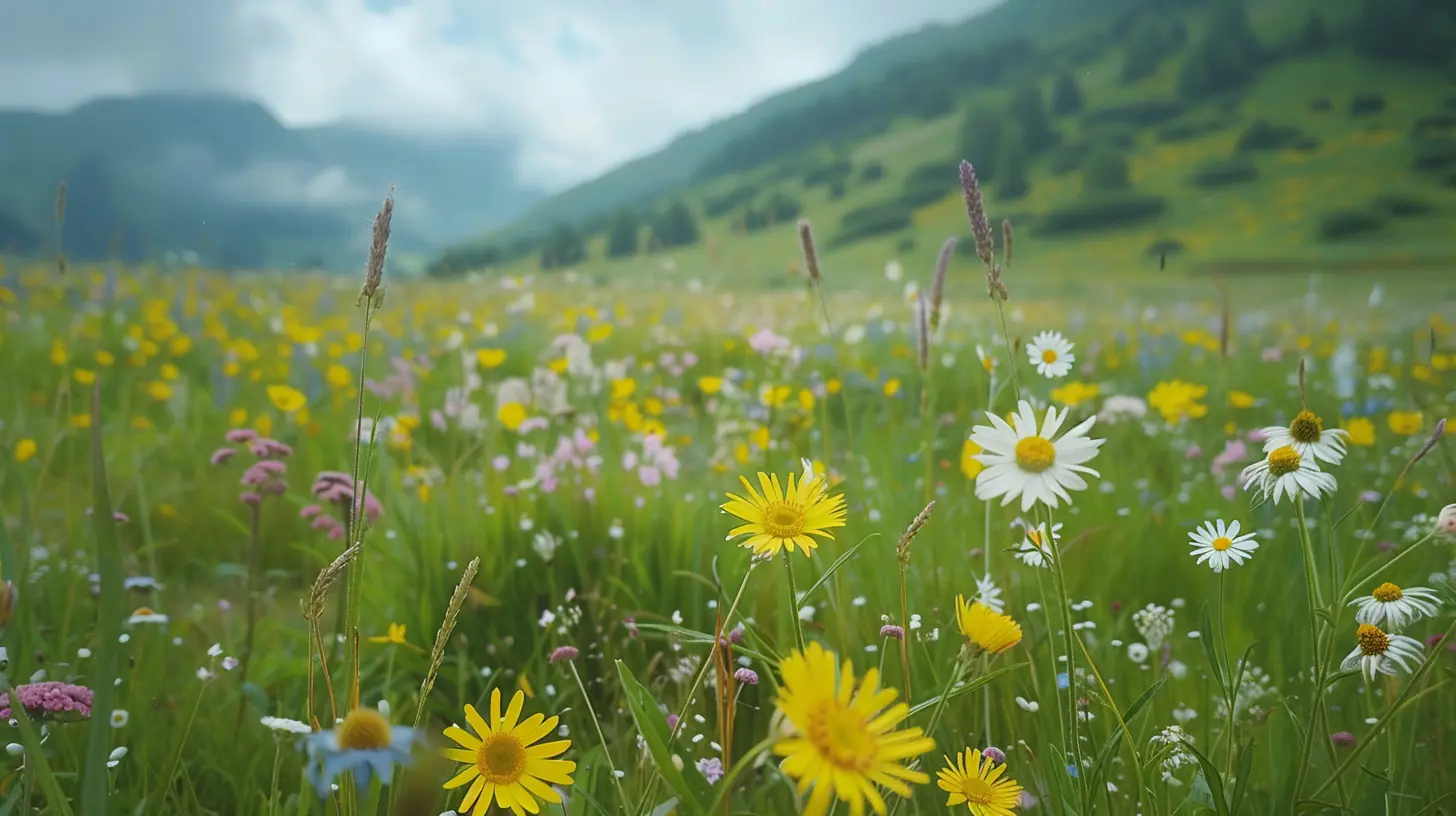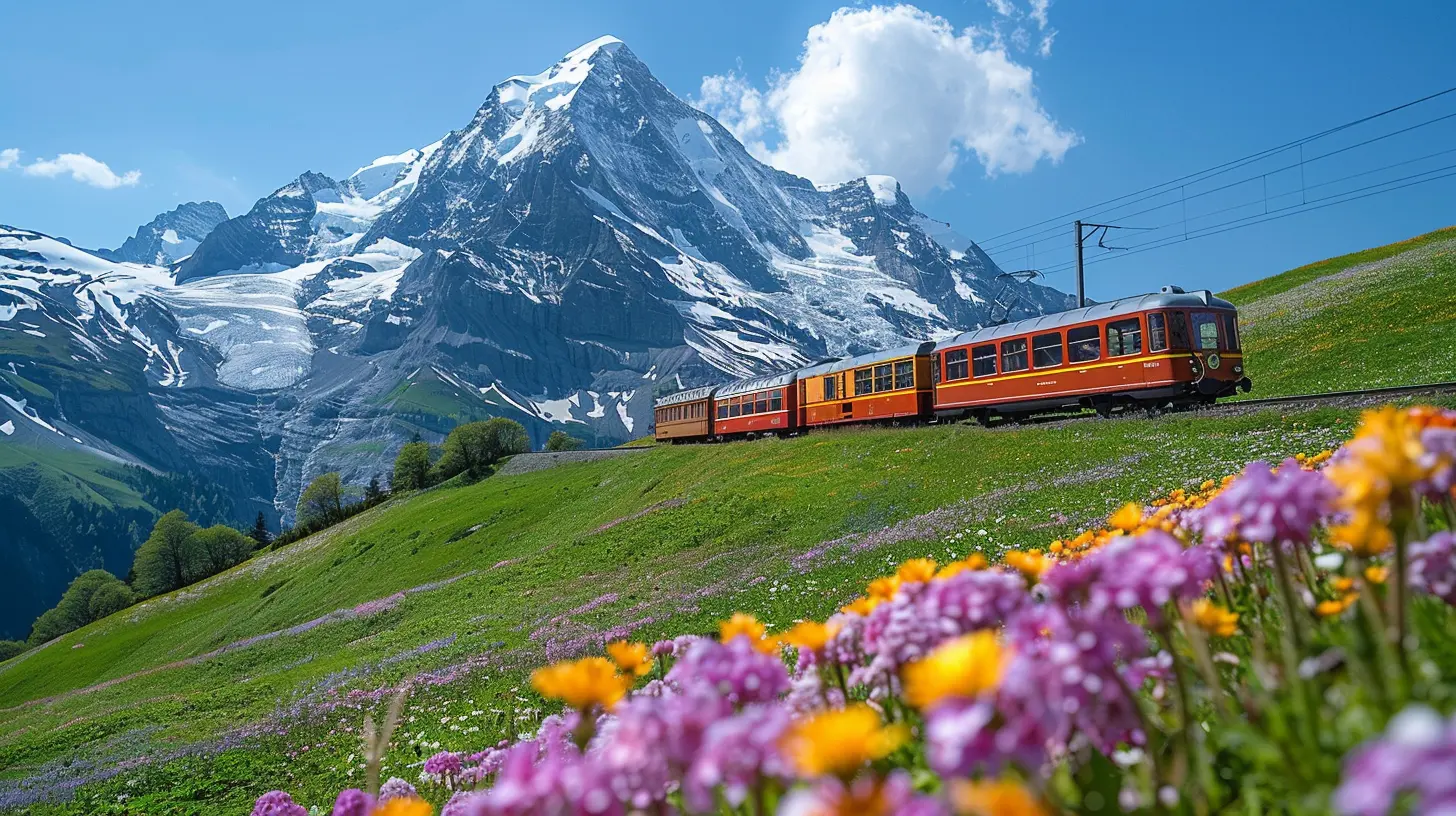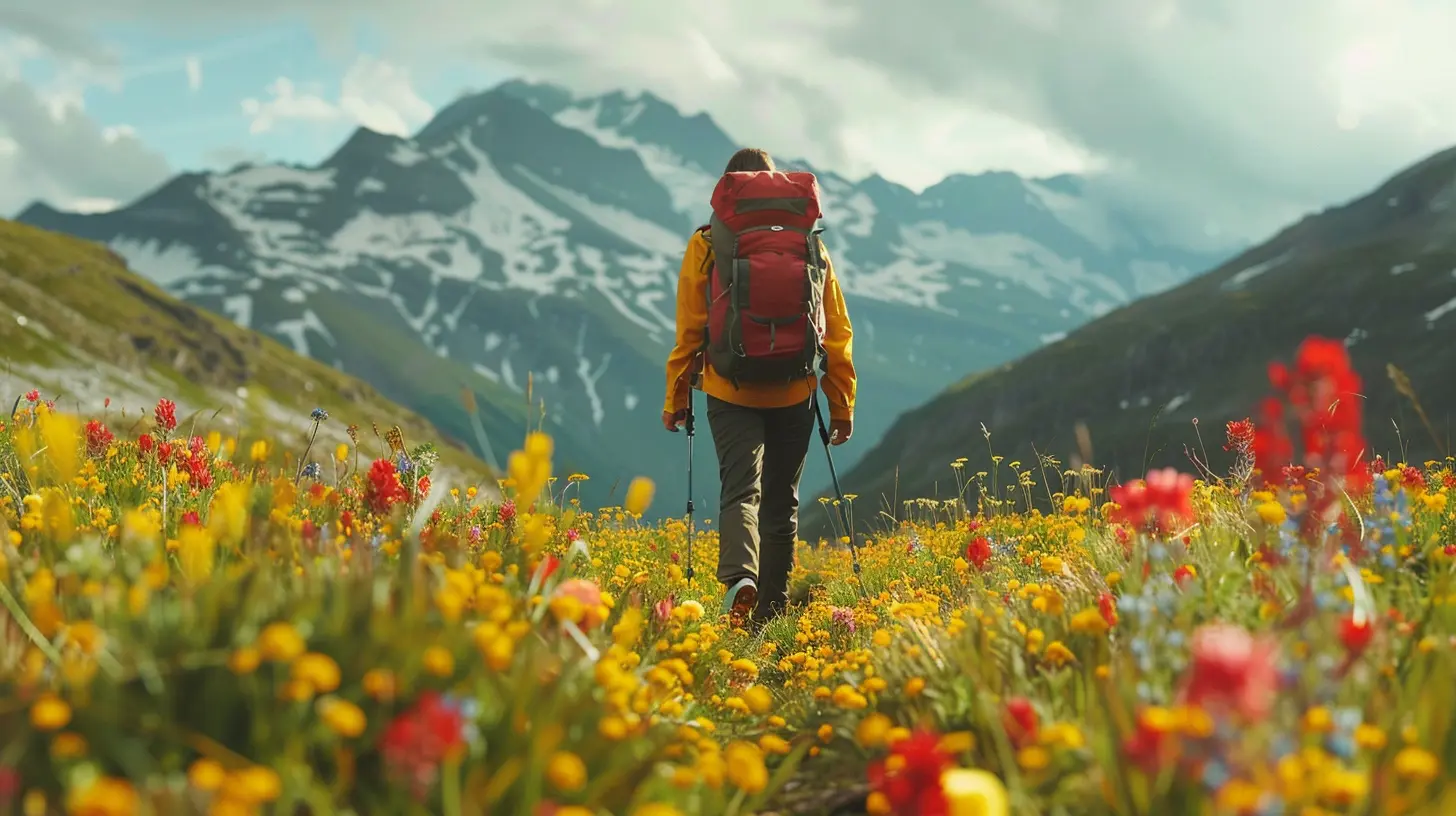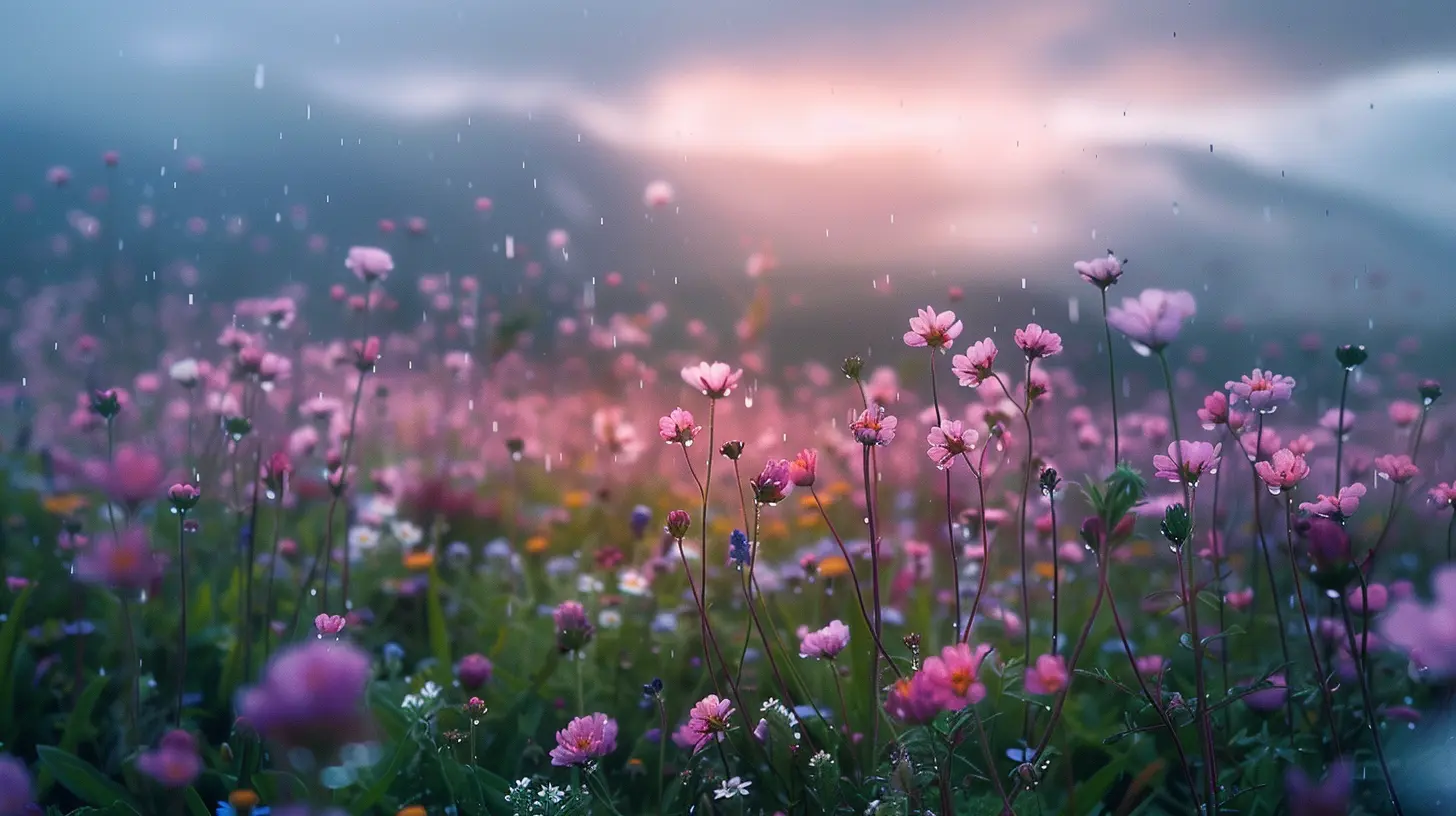When to See the Wildflowers Bloom in the Swiss Alps
6 June 2025
There’s something magical about standing in an open alpine meadow, surrounded by towering mountains, with a carpet of wildflowers stretching as far as the eye can see. The Swiss Alps aren’t just about snow-capped peaks and skiing—they’re also home to one of Europe’s most breathtaking natural shows: the wildflower bloom.
Now, if you're hoping to witness this explosion of color, timing is everything. Let’s dive into when you should pack your bags, lace up your hiking boots, and head to Switzerland to catch this majestic bloom at its peak.
Why Wildflowers in the Swiss Alps Are So Special
Let’s be honest—wildflowers aren’t exactly rare. But trust me, the kind of display you’ll find in the Swiss Alps is on another level. Picture this: violet-blue gentians, fiery red alpine roses, delicate edelweiss, and golden arnica, all blooming together against a backdrop of snow-dusted peaks.Because the altitude in the Swiss Alps ranges from lush valleys to high mountain passes, you get a layered bloom. That means different types of flowers explode at different heights throughout the season. With this vertical variety, one trip can feel like you're traveling through multiple flower seasons in just a few days.
The Best Time to See Wildflowers in the Swiss Alps
1. Late Spring to Early Summer (Mid-May to June)
This is when the show starts, especially in the lower alpine valleys—think around 800 to 1,200 meters above sea level. As the snow melts away, Mother Nature gets to work. Meadows burst into color, and trails that were impassable just a few weeks earlier become walkable again.You’ll see:
- Crocuses poking up through the last of the snow
- Alpine snowbells
- Buttercups
- Wild daffodils
If you’re not a fan of crowds, this shoulder season is your sweet spot. It’s quiet, peaceful, and perfect for photographers who want those early bloom shots without tourists in their frames.
2. Full Bloom Season (July)
Now we’re talking. July is prime time if you want the full alpine wildflower experience. By this point, the bloom has crept up higher into the mountains—1,500 meters and above.What’s blooming in July?
- Edelweiss (that fuzzy white star everyone’s obsessed with)
- Alpine aster
- Gentians (those deep blue flowers you’ll see in postcards)
- Alpine roses (they’re not actual roses, but they’re just as pretty)
This is also the season when Switzerland’s famous walking and hiking trails are at their best. Everything opens up: glacier-fed lakes, ridgeline paths, and high-altitude huts where you can rest and grab lunch with a view.
But here’s the catch: July is also tourist season. So the trails will be busier, and accommodation in popular spots like Zermatt or Grindelwald can sell out fast. Book early if you want to get the best spots.
3. Late Summer (August to Early September)
Think the show’s over by August? Nope. While the lower valleys start to lose their bloom, the higher elevations are still going strong. In fact, some wildflowers only bloom later in the season.This is a great time to:
- Visit higher passes like the Susten Pass or the area around the Matterhorn
- Spot unique species like monkshood and mountain orchids
- Enjoy cooler temperatures and thinner crowds
It’s also harvest season for alpine herbs, so you’ll see local farmers out collecting medicinal plants. It’s a perfect time for those into botany—or just folks who enjoy sipping herbal tea with a view.
What Affects the Bloom Timing?
We wish we could tell you, “Book for July 10th and you’re guaranteed a wildflower wonderland,” but nature isn’t that predictable. There are a few key factors that can affect the timing of the bloom:1. Snowmelt Timing
The wildflower show only starts once the snow begins to melt. A late winter? Everything’s delayed. An early thaw? Flowers might arrive ahead of schedule.2. Elevation
The higher you go, the later the bloom. Lower valleys wake up in May. Mid-elevations peak around June and July. High passes might only come alive in August.3. Weather
A warm spring can kickstart growth, but too much rain might delay things. Sunshine is your best friend when it comes to seeing those little petals open wide.4. Region
Not all parts of Switzerland bloom at the same time. Southern areas like Ticino typically bloom earlier than northern alpine zones. Timing your trip based on your destination is crucial.
Top Regions for Wildflower Viewing
Switzerland isn’t exactly huge, but the range of wildflower spots is impressive. Here are some go-to areas for catching the bloom:1. Engadine Valley (Graubünden)
High, remote, and pretty underrated, the Engadine offers pristine meadows without the huge tourist crowds. Try the trails around Scuol or Sils.2. Jungfrau Region (Bernese Oberland)
This is the classic Swiss postcard scene. Think Eiger, Mönch, and Jungfrau peaks with wildflower fields in the foreground. Hike from Männlichen to Kleine Scheidegg for jaw-dropping views—and flowers.3. Zermatt
You’re here for the Matterhorn, sure—but don’t miss the wildflower trails around Sunnegga and the Five Lakes Walk. Detailed signposts even let you ID the blooms as you walk.4. Valais
Home to hundreds of indigent alpine species, this region is a goldmine for flower hunters. Arolla and the Val d’Anniviers are especially rich in biodiversity.5. Ticino
Down south and kissed by a Mediterranean climate, Ticino’s wildflower bloom starts early. Check out Valle Verzasca or the Monte Brè trails.Bonus: The “Alpine Garden” Experience
Want to cheat a little? Swiss alpine gardens are curated natural reserves where you can see a massive number of plant species in one spot. It's like speed-dating with wildflowers.Check out:
- The Schynige Platte Alpine Garden – Near Grindelwald, this garden has over 600 species.
- Champex-Lac Alpine Botanical Garden – In Valais, with plants from all over the Alps.
- La Thomasia – Located in the Vaud Alps, it showcases endangered alpine species.
Perfect if you’ve got limited time or want some flower education with your scenery.
Tips for Wildflower Watching in the Alps
- Bring a flower guidebook or app – It’s fun to ID what you see.- Start early in the morning – You’ll beat the crowds and the light is perfect for photos.
- Stay on the trails – Some of these plants are rare or protected. Treading off-path damages habitats.
- Pack layers – Alpine weather is a moody beast. Dress for anything.
- Use public transport – Swiss trains and buses will get you closer to remote trailheads than any car.
A Few Final Thoughts
Chasing wildflowers in the Swiss Alps isn’t just a bucket-list experience—it’s also a reminder of how delicate and beautiful our planet can be. Every bloom tells a story of survival, adaptation, and resilience. From May to September, you’ve got a solid window to witness it for yourself.So, whether you're hiking through a sun-drenched meadow in July, sipping herbal tea in August, or catching the first crocuses of late spring, the alpine wildflower season is well worth planning for.
Just don’t forget your camera—you’re going to want to remember this.
all images in this post were generated using AI tools
Category:
Best Time To VisitAuthor:

Claire Franklin
Discussion
rate this article
3 comments
Arwen Martin
Timing your visit to the Swiss Alps for wildflower blooms rewards you with vibrant landscapes and unforgettable natural beauty. Plan wisely!
June 13, 2025 at 3:24 AM

Claire Franklin
Thank you for the reminder! Timing is indeed key to experiencing the stunning blooms. Happy planning!
Wilder Horne
What a beautiful celebration of nature! Your insights on the wildflower bloom in the Swiss Alps offer hope and joy to those seeking solace in the mountains. Thank you for sharing this precious information, allowing readers to connect with the breathtaking beauty and tranquility of the Alpine landscape.
June 7, 2025 at 5:05 AM

Claire Franklin
Thank you so much for your kind words! I'm glad you found the article inspiring and that it resonates with your love for the Swiss Alps. Happy exploring!
Beatrice McGuffey
Venture into the heart of the Swiss Alps, where vibrant wildflowers whisper secrets of ancient tales. Discover the fleeting moments of bloom—nature's canvas alive with color, awaiting your exploration.
June 6, 2025 at 2:48 PM

Claire Franklin
Thank you! The Swiss Alps truly offer a breathtaking display of wildflowers that transforms the landscape each season. Exploring them is a magical experience!



